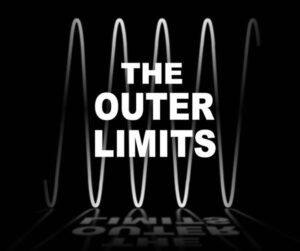 “There is nothing wrong with your television set. Do not attempt to adjust the picture. We are controlling transmission.”
“There is nothing wrong with your television set. Do not attempt to adjust the picture. We are controlling transmission.”
These ominous words broke into the American psyche in 1963 with the first airing of the television program Outer Limits. People could be forgiven if they thought they might have been teleported to 1984 when they heard it, even though every TV program could be described that way. It’s not like there was any interactive TV in those days.
One could also be forgiven for thinking the introduction was a prescient warning of the state of television and media in all its incarnations in the 21st century:
“Sit quietly and we will control all that you see and hear.”
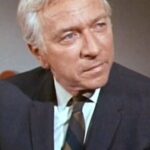 The Control Voice, as the narrator is called, was voiced by Vic Perrin, a seasoned actor since the days of radio in the 1940s who went on to perform in many television shows. He wrote radio scripts and narrated feature films and educational productions, including the Space Ship Earth attraction at Disney’s Epcott Center. His voice added a chilling effect to the Outer Limits narration as the no-nonsense spokesperson for the mysterious oppressors wresting control of your television for one hour every week.
The Control Voice, as the narrator is called, was voiced by Vic Perrin, a seasoned actor since the days of radio in the 1940s who went on to perform in many television shows. He wrote radio scripts and narrated feature films and educational productions, including the Space Ship Earth attraction at Disney’s Epcott Center. His voice added a chilling effect to the Outer Limits narration as the no-nonsense spokesperson for the mysterious oppressors wresting control of your television for one hour every week.
 Some might question my claim that Outer Limits was the first serious science fiction on American television. Perhaps that honor should go to Science Fiction Theater airing from 1955 to 1957, but I sampled that on YouTube and felt like it didn’t quite cut the muster because it felt too much like it had the typical mindset of television in those days.
Some might question my claim that Outer Limits was the first serious science fiction on American television. Perhaps that honor should go to Science Fiction Theater airing from 1955 to 1957, but I sampled that on YouTube and felt like it didn’t quite cut the muster because it felt too much like it had the typical mindset of television in those days.
 A better case could be made for the iconic Twilight Zone, but although it had a number of episodes that were straight science fiction, its primary genre was Lovecraftian weirdness that often included fantasy and the supernatural. Both these contenders were influential in the creation of Outer Limits, but it was Outer Limits that brought serious science fiction to the small screen.
A better case could be made for the iconic Twilight Zone, but although it had a number of episodes that were straight science fiction, its primary genre was Lovecraftian weirdness that often included fantasy and the supernatural. Both these contenders were influential in the creation of Outer Limits, but it was Outer Limits that brought serious science fiction to the small screen.
 The creator of the show was Leslie Stevens, a producer, writer, and director. He began as a Broadway playwright by running away from home to join Orson Welles’ Mercury Theater troup and had to be returned home by a truant officer. At 20 years he fought as a captain in World War 2, then studied theater at Yale.
The creator of the show was Leslie Stevens, a producer, writer, and director. He began as a Broadway playwright by running away from home to join Orson Welles’ Mercury Theater troup and had to be returned home by a truant officer. At 20 years he fought as a captain in World War 2, then studied theater at Yale.
His creation Outer Limits began as a pilot for a series called Please Stand By. The pilot was about a radio station owner who conducted secret experiments on the side to investigate microwave radiation. Amazingly, this was two years before the microwave background radiation was discovered for real that became a fundamental verification of the Big Bang theory. His experiments accidentally transport a nitrogen-based creature from the Andromeda Galaxy to Earth, who unintentionally wreaks havoc with his natural radiation.
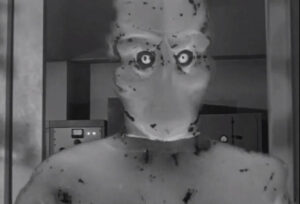 ABC picked up the pilot but rejected the title, so Stevens renamed the series Outer Limits and aired the pilot with a few changes as “The Galaxy Being.” The alien effect was pretty remarkable for 1963. I watched the debut of that first episode as a nine-year-old. It creeped me out to the point where, whenever I showered at night (our bathroom window was in the wall of the shower), I was scared of the Galaxy Being peering in at me through that window.
ABC picked up the pilot but rejected the title, so Stevens renamed the series Outer Limits and aired the pilot with a few changes as “The Galaxy Being.” The alien effect was pretty remarkable for 1963. I watched the debut of that first episode as a nine-year-old. It creeped me out to the point where, whenever I showered at night (our bathroom window was in the wall of the shower), I was scared of the Galaxy Being peering in at me through that window.
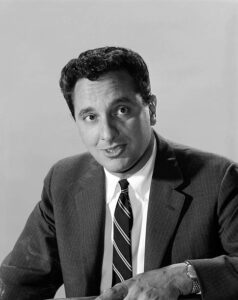 Speaking of monsters, the first season was heavy with monsters of the week—on purpose. Season 1 producer Joseph Stefano, a legendary figure to Outer Limits fans and the screenwriter for Hitchcock’s Psycho, insisted on them as a dramatic device, a hook for the television audience. The staff developed a habit of calling them “the bear” for the episode. Stefano was instrumental in setting the creative mood for the series, a style unique to television in those days that set Outer Limits apart from the average schmuck fare. Cinematographer Conrad Hall, who photographed alternate episodes for most of the first season, added to that mood with a German film noir style.
Speaking of monsters, the first season was heavy with monsters of the week—on purpose. Season 1 producer Joseph Stefano, a legendary figure to Outer Limits fans and the screenwriter for Hitchcock’s Psycho, insisted on them as a dramatic device, a hook for the television audience. The staff developed a habit of calling them “the bear” for the episode. Stefano was instrumental in setting the creative mood for the series, a style unique to television in those days that set Outer Limits apart from the average schmuck fare. Cinematographer Conrad Hall, who photographed alternate episodes for most of the first season, added to that mood with a German film noir style.
 Today we’re used to astonishing effects, and if we compare Outer Limits to such modern productions like The Expanse or the recent Planet of the Apes film series, its effects are downright pathetic. But we have to remember, Outer Limits predated 2001: A Space Odyssey, the original Star Trek, and even the cringeworthy Lost In Space, the king of silly Monsters of the Week including an actor in a giant carrot suit. For the audiences of the times, Outer Limits aliens were downright new and disturbing. The alien in the third episode “The Architects of Fear” (the first one pictured below) was deemed so disturbing, some ABC affiliates literally blacked out the scenes where it appeared.
Today we’re used to astonishing effects, and if we compare Outer Limits to such modern productions like The Expanse or the recent Planet of the Apes film series, its effects are downright pathetic. But we have to remember, Outer Limits predated 2001: A Space Odyssey, the original Star Trek, and even the cringeworthy Lost In Space, the king of silly Monsters of the Week including an actor in a giant carrot suit. For the audiences of the times, Outer Limits aliens were downright new and disturbing. The alien in the third episode “The Architects of Fear” (the first one pictured below) was deemed so disturbing, some ABC affiliates literally blacked out the scenes where it appeared.

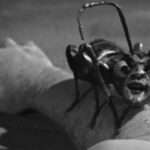

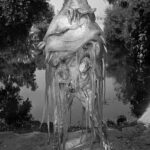

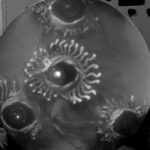
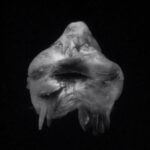
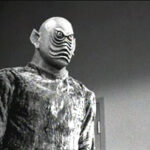

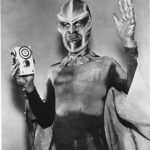
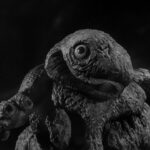
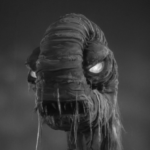
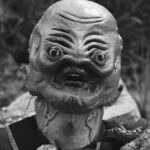

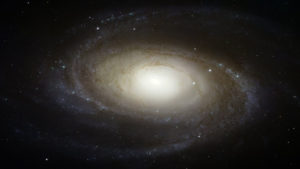 The science in its science fiction was also lame compared to modern times, but the 1963 audience wasn’t nearly as scientifically literate as we are today, so it played well anyway. An alien being dragged from the Andromeda Galaxy to Earth in seconds through a 3D television receiver because a radio disk jockey cranked the transmission power up. A human transformed into an alien through brute force surgery instead of DNA bioengineering. A machine that can cause a human to evolve at an extreme speed or devolve him back into a protohuman.
The science in its science fiction was also lame compared to modern times, but the 1963 audience wasn’t nearly as scientifically literate as we are today, so it played well anyway. An alien being dragged from the Andromeda Galaxy to Earth in seconds through a 3D television receiver because a radio disk jockey cranked the transmission power up. A human transformed into an alien through brute force surgery instead of DNA bioengineering. A machine that can cause a human to evolve at an extreme speed or devolve him back into a protohuman.
Such concepts would be laughed at today. But in 1963, the Mercury space program was just ending and the Apollo program was in its early stages. Space travel was a new thing to Americans and not well understood. DNA mapping hadn’t happened. Quantum physics was pretty much unknown to the lay person. In those days, Outer Limits stories were cutting edge science fiction for the average viewer.
 The show also had a significant impact on the the next serious science fiction show to come to television, Star Trek, which aired 1966 to 1969. That influence began with the Great Bird of the Galaxy Gene Roddenberry haunting the studio of Outer Limits. He ended up hiring some of its staff for Star Trek, casting some of its actors, and borrowing some of its ideas.
The show also had a significant impact on the the next serious science fiction show to come to television, Star Trek, which aired 1966 to 1969. That influence began with the Great Bird of the Galaxy Gene Roddenberry haunting the studio of Outer Limits. He ended up hiring some of its staff for Star Trek, casting some of its actors, and borrowing some of its ideas.
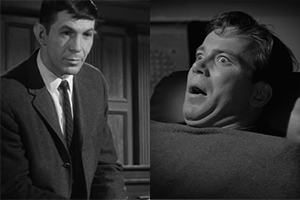 Leonard Nimoy was cast in two episodes and William Shatner was cast in one episode about a Project Vulcan. Other actors cast were Grace Lee Whitney and James Doohan. One of the aliens inspired the Horta rock alien in a Star Trek episode, both of which were performed by the same Hungarian actor Janos Prohaska, who often played monsters and animals. An ion storm effect in an Outer Limits episode became the sparkles of the Enterprise transporter beam—shining the light of a film projector through a container of glitter suspended in liquid. The design of the pointed ears for the super-evolved man was used for Spock’s ears. A couple Outer Limits aliens were used as caged alien extras in the Star Trek pilot episode “The Cage” that was never aired but repurposed for the two-part episode “The Menagerie.”
Leonard Nimoy was cast in two episodes and William Shatner was cast in one episode about a Project Vulcan. Other actors cast were Grace Lee Whitney and James Doohan. One of the aliens inspired the Horta rock alien in a Star Trek episode, both of which were performed by the same Hungarian actor Janos Prohaska, who often played monsters and animals. An ion storm effect in an Outer Limits episode became the sparkles of the Enterprise transporter beam—shining the light of a film projector through a container of glitter suspended in liquid. The design of the pointed ears for the super-evolved man was used for Spock’s ears. A couple Outer Limits aliens were used as caged alien extras in the Star Trek pilot episode “The Cage” that was never aired but repurposed for the two-part episode “The Menagerie.”
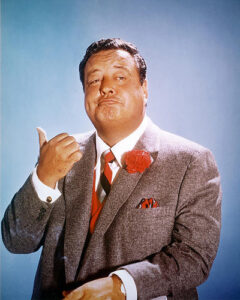 The first season was well received, but the second season received similar dismissive treatment as Star Trek received that ended up killing it. ABC moved its time slot to compete with The Jackie Gleason Show, a powerhouse for CBS. Stefano knew that would mark the death knell for the show, so he bailed as producer for the second season. Without Stefano, the “bear of the week” stopped being standing policy, and few monsters appeared. The series ended up being canceled midseason.
The first season was well received, but the second season received similar dismissive treatment as Star Trek received that ended up killing it. ABC moved its time slot to compete with The Jackie Gleason Show, a powerhouse for CBS. Stefano knew that would mark the death knell for the show, so he bailed as producer for the second season. Without Stefano, the “bear of the week” stopped being standing policy, and few monsters appeared. The series ended up being canceled midseason.
But the show maintained a cult following and was an influential show in science fiction for years to come. The full theme song performed during the ending credits still expresses the ominous and chilling mood of the show and is a classic in television theme songs. It was composed by Dominic Frontiere who also created much of the music for the first season.
It was a sad day when Outer Limits was canceled, but like its cousin Star Trek, a cult following kept it alive, and it reincarnated with a reboot in 1995 on Showtime. Much more sophisticated in story and effects, it surpassed the quality of the science fiction of the original and was a worthy addition to the franchise. It lasted for six seasons on Showtime and received an additional season on the Sci Fi Channel. And it still chills us with that dystopian warning:
“We will control all that you see and hear.”
Your articles are very helpful to me. May I request more information?
What more information?